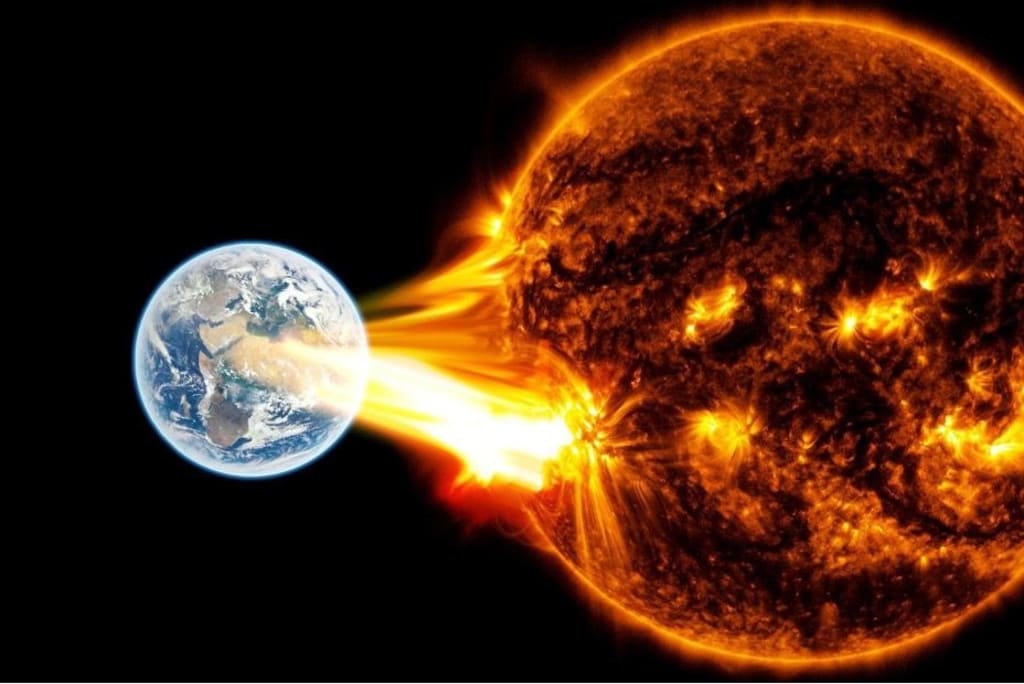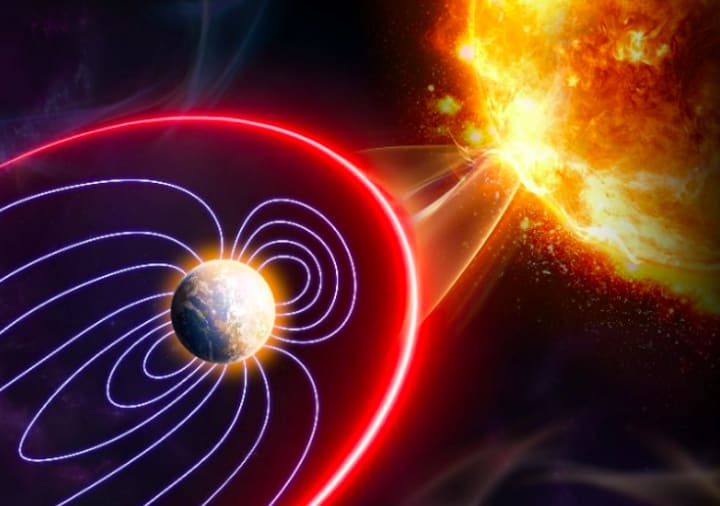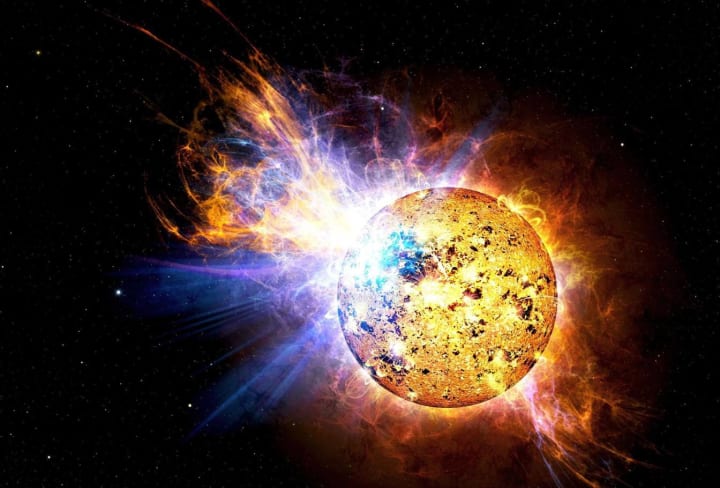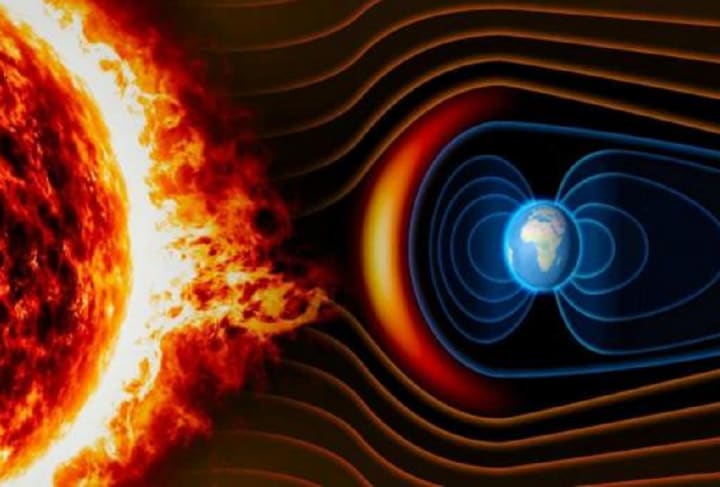
Introduction
The sun is a massive ball of gas that constantly emits energy in the form of light and heat. Occasionally, the sun also releases large bursts of energy known as solar storms. These storms are caused by solar flares and coronal mass ejections (CMEs), which can have a significant impact on the Earth's environment. In this article, we will discuss the effects of solar storms on Earth and what happens during a solar storm.
Solar Storms and Their Causes
As mentioned earlier, solar storms are caused by solar flares and coronal mass ejections. A solar flare is a sudden burst of energy that occurs when magnetic energy that has built up in the sun's atmosphere is released. These flares can release as much energy as a billion atomic bombs and can last from minutes to hours.
Coronal mass ejections, on the other hand, are massive eruptions of plasma and magnetic field from the sun's corona. These ejections can release billions of tons of matter into space and travel at speeds of up to several million miles per hour.
Both solar flares and coronal mass ejections can have a significant impact on the Earth's environment, as we will discuss in the following sections.
Effects of Solar Storms on Earth
The effects of solar storms on the Earth can range from mild to severe, depending on the strength and duration of the storm. Some of the effects of solar storms are:
Aurora Borealis/Australis

One of the most beautiful effects of solar storms is the appearance of auroras in the polar regions. Auroras, also known as the Northern or Southern Lights, are caused by charged particles from the sun interacting with the Earth's magnetic field. These particles are channeled towards the Earth's poles, where they collide with gas atoms in the atmosphere and emit light. The result is a spectacular display of colored lights in the sky.
Satellite and Communication Disruptions
Another effect of solar storms is the disruption of satellites and communication systems. The charged particles from the sun can interfere with the electronics on board satellites, causing blackouts or other disruptions. Communication systems such as radio and television can also be affected, leading to interference or total disruption of services.
Power Grid Disruptions
Solar storms can also disrupt power grids, causing widespread blackouts and other electrical problems. When the charged particles from the sun interact with the Earth's magnetic field, they can induce electric currents in power lines. These currents can overload transformers and other equipment, causing power outages and damage to electrical infrastructure.
Radiation Exposure
Solar storms can also be dangerous for astronauts and other individuals in space. The charged particles from the sun can penetrate the walls of spacecraft and expose individuals to dangerous levels of radiation. This can increase the risk of cancer and other health problems in the long term.
GPS Navigation Errors
The disruptions caused by solar storms can also affect GPS navigation systems, leading to errors in location tracking and navigation. This can be a significant problem for aircraft and other vehicles that rely on GPS for navigation.
What Happens During a Solar Storm?

During a solar storm, the charged particles from the sun are channeled towards the Earth's magnetic field. This can cause the Earth's magnetic field to fluctuate, leading to the effects discussed above. The severity of the effects depends on the strength and duration of the storm.
Scientists monitor solar activity and can predict when a solar storm is likely to occur. This gives individuals and organizations time to prepare and take measures to protect themselves and their infrastructure. Some of the measures that can be taken include:
Power Grid Protection
To protect the power grid from the effects of solar storms, electrical utilities can install devices such as surge protectors and current limiters. These devices can help prevent damage to equipment and reduce the risk of power outages. Electrical utilities can also adjust the voltage of the power grid during a solar storm to help reduce the impact of the induced currents.
Satellite and Communication Protection

To protect satellites and communication systems from the effects of solar storms, organizations can take measures such as shielding their electronics or temporarily shutting down non-essential systems. Satellites can also be moved to lower altitudes or different orbits to minimize their exposure to the charged particles.
Radiation Protection
To protect individuals in space from the effects of solar storms, spacecraft can be equipped with radiation shielding. Astronauts can also be instructed to take shelter in specific areas of the spacecraft during a solar storm to reduce their exposure to radiation.
GPS Navigation
To reduce the impact of solar storms on GPS navigation systems, organizations can use backup navigation systems or adjust their operations to minimize the risk of errors. Pilots can also be instructed to use other navigation methods, such as visual landmarks or radio navigation, during a solar storm.
Solar storms have occurred on Earth in the past and will continue to occur in the future. The frequency and severity of solar storms vary, but historical records and scientific studies have provided evidence of significant solar storms that have impacted the Earth.

One of the most significant solar storms in recorded history occurred in 1859, known as the Carrington Event. This solar storm produced a massive solar flare and coronal mass ejection, which caused auroras to be visible as far south as Cuba and Hawaii. It also disrupted telegraph systems, causing fires and communication failures. If a similar event were to occur today, it could have a much more significant impact on our modern infrastructure, such as power grids, satellites, and communication systems.
More recently, in 1989, a solar storm caused a nine-hour power outage in Quebec, Canada. The solar storm induced electric currents in the power grid, causing equipment to overload and fail. This event highlights the vulnerability of our infrastructure to the effects of solar storms.
There have been other significant solar storms in recent history, such as in 2003 and 2012, which caused some disruptions to satellite and communication systems. While these events did not cause significant damage, they serve as a reminder of the potential impact of solar storms on our modern society.
Conclusion
In conclusion, solar storms can have a significant impact on the Earth's environment and infrastructure. While the effects of solar storms can be disruptive, modern technology and infrastructure are generally resilient to their effects. However, it is still important to monitor solar activity and take measures to protect infrastructure and individuals during a solar storm. With proper preparation and measures in place, the impact of solar storms can be minimized, and the beautiful auroras they produce can be enjoyed without fear of damage or disruption.

Solar storms have occurred on Earth in the past and will continue to occur in the future. While we cannot predict the exact timing and severity of these events, we can take measures to prepare and protect our infrastructure and individuals. By monitoring solar activity and taking proper precautions, we can minimize the impact of solar storms and enjoy the beauty of auroras without fear of damage or disruption.
About the Creator
Judith
I am a housewife with a passion for writing and a talent for creating interesting articles. With my talent for writing and my passion for sharing, I will sure to become one of your favorite article creators.






Comments
There are no comments for this story
Be the first to respond and start the conversation.